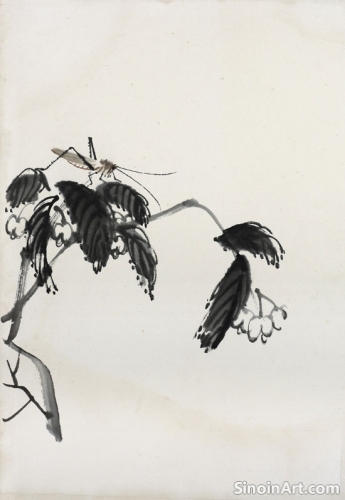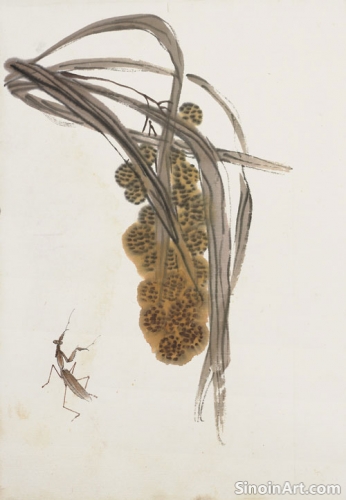Xieyi Painting and the Depiction of Birds
|
Birds are a frequent and beloved subject in Xieyi painting, offering a rich variety of forms, colors, and movements that provide endless opportunities for artistic expression. They also often carry symbolic meanings within Chinese culture, and artists use them as metaphors for broader concepts. They are a fascinating subject with a rich historical tradition in Chinese art.  The use of fluid brushstrokes allows the artist to capture the delicate feathers, the graceful flight, and the lively energy of birds. The artist must have a deep understanding of brushwork and a strong ability to control the ink. It requires both technical mastery and also a sense of the living, vital energy that flows through every living thing.  Different species of birds often carry specific symbolic meanings in Chinese culture. The crane, for example, is associated with longevity and immortality, while the mandarin duck symbolizes love and marital fidelity. Artists are often very intentional with their selections of which birds to represent. The symbolic nature of the birds often adds a deeper level of meaning.  Xieyi bird paintings often emphasize the freedom and spontaneity of the birds, using the technique to express the uninhibited nature of flight, and the joy of movement. The feeling of being free is often conveyed powerfully within the paintings. It celebrates the natural grace and beauty of the animal. The artist uses ink washes and suggestive strokes to create a sense of depth, atmosphere, and movement, capturing the beauty and vibrancy of the natural world. The careful observation of nature makes these images both beautiful and highly evocative. They often feel as if they are alive on the page. |
Tag : Bird paintings, Xieyi birds, Chinese bird art, ink wash birds, animal depictions
Related information
- The Concept of "Yi Bi Cheng Qiao" in Xieyi
- Contemporary Xieyi Artists to Explore
- Xieyi Painting as a Form of Personal Expression
- The Importance of Practice in Xieyi
- The Cultural Significance of Xieyi: Beyond Artistic Form
"Yi Bi Cheng Qiao" (skill achieved in one brushstroke) is a key concept in Xieyi, emphasizing precision, confidence, and spontaneity in each brushstroke, aiming for efficiency, expressiveness, and a seemingly effortless display of skill, acquired through dedicated training and a deep connection with the art form.
Exploring the work of contemporary Xieyi artists reveals the ongoing evolution of this tradition, with artists incorporating abstraction, exploring social and political issues, experimenting with new techniques, and maintaining a connection to its core principles, thereby expanding the boundaries of the art form and ensuring its continued relevance in the modern world.
Xieyi painting is a deeply personal form of expression, allowing artists to share their inner world, interpret their subject matter freely, and create unique artworks that reflect their individual vision, emotions, and experiences, making it a vehicle for both artistic expression and self-discovery.
Dedicated and consistent practice is essential for mastering Xieyi painting, developing technical skills, intuition, and spontaneity, while also fostering patience, perseverance, and a deeper understanding of the art form's philosophy and aesthetics, transforming the practice into a form of self-discovery.
This article explores the cultural significance of Xieyi painting, highlighting its connection to Daoist philosophy, Chinese values, artistic heritage, and its role in preserving and expressing Chinese cultural identity.